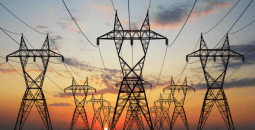


 I DECIDED to head north two weeks ago. Having exhausted my appetite for energy- sapping adventures through the rambling waters of the Zambezi, both through the authoritative river channel to the west and in Lake Kariba, I was yearning for an adventure that would offer me the opportunity to explore seamless expanses of rich wildlife estates where the law of the jungle prevails.
I DECIDED to head north two weeks ago. Having exhausted my appetite for energy- sapping adventures through the rambling waters of the Zambezi, both through the authoritative river channel to the west and in Lake Kariba, I was yearning for an adventure that would offer me the opportunity to explore seamless expanses of rich wildlife estates where the law of the jungle prevails.
The sporadic whistle of an African bird, or the violent movement of jumbos browsing the dry twigs of the dominant Mopani woodlands is what I yearned for. My natural choice was to explore the Zambezi Escarpment eastwards, sampling the creator’s unequalled artistry in an environment that would give me an insight into how the Zambezi behaves as it meanders through some of the most breathtaking landscapes beyond Lake Kariba. I was not disappointed.
At the magnificent Marongora area, where the Harare-Lusaka highway dangerously negotiates its way through a series of sharp curves and steep mountain ranges, the sun gets more scorching and visibility becomes poor. But the scenery gets more dramatic. Slight patches of the Zambezi appear in the horizon, and the vast forests beyond roll into landmarks that submit into the river.
Here, the Zambezi Escarpment, the name given to escarpments forming both sides of the rift valley or graben in which lie the middle Zambezi River and Lake Kariba, dramatically opens but maintains their 50 to 100-kilometre distance in between the northern part de-limiting the valley on the Zambian side, and the southern escarpement marking the furthest distance of the magnificent terrain.
They are fault scarps, rising 500 to 600 metres higher than the lake or river, rolling through several gorges such as the Batoka, which is 800 kilometres to the lower Zambezi. The mighty river channel defiantly weaves its way in between what looks like a giant floodplain, which you can only view from the edge of the escarpment. Immediately, our group was struck by the architecture and brilliance of the engineers who constructed the narrow road at our vantage point, Marongora, a dangerous part of the escarpment.
But while we pondered the difficulties designers encountered, we were sporadically jolted by heads of herbivores passing by. They were harmless. But when a group of lions crept towards us, it invoked deathly silence in a vehicle that had previously bustled with excitement. It is difficult to understand the behaviour of the king of the jungle, especially in Marongora, where stories are endlessly told of people’s deadly confrontations with predators.
A few months ago, a sangoma left his camp on the foot of the mountain for the bush never to come back. A few days later, after an exhausting search, rumour-mongers said rangers only recovered his head. We encountered buffaloes, impalas, water bucks, elands and had the opportunity to see men at work — long distances truck drivers struggling to descend the steep mountain range.
The entire stretch is littered with abandoned accident-damaged wreckages, many of them beyond repair and trapped in steep gullies. The day moved fast, and the breathtaking Zambezi sunset mesmerised us, marking the end of a tour that was originally expected to go beyond the escarpment. I was left with no doubt that Victoria Falls may be its crowning glory, but the Zambezi offers a safari with a difference east of Lake Kariba.
Marongora is not the first thing that comes to mind when you think of Zimbabwe. Tourists are usually attracted to the mist rising off glassy patches of the Zambezi in the morning sun, to the noise and spray of Victoria Falls and the expansive Lake Kariba. But memories of the trip will dominate my mind for a long time to come.
newsdesk@fingaz.co.zw